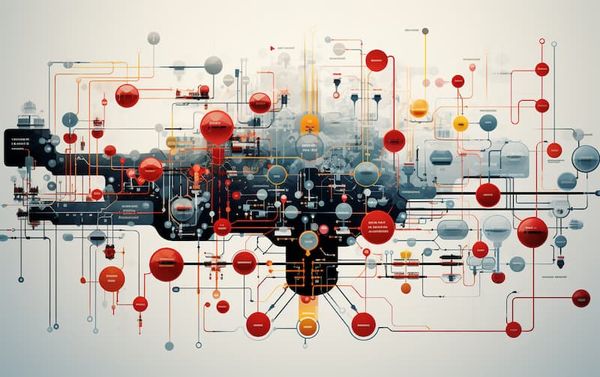The rise of AI-powered hacking tools, such as FraudGPT, DarkBART, and DarkBERT, demonstrates an emerging and profound challenge in the realm of cybersecurity, necessitating a reevaluation and reinvention of existing defense strategies.
The New Wave of AI-Driven Cyberthreats
The cybersecurity landscape has witnessed the emergence of an innovative yet alarming trend - the integration of artificial intelligence into hacking tools. Tools like FraudGPT, designed specifically for illicit activities, have set a concerning precedent. Moreover, the advent of other AI tools, such as DarkBART and DarkBERT, underscores the expanding horizon of AI-integrated cyber threats. With their origins traceable to an individual named CanadianKingpin12 and their active promotion on hacker forums, it becomes evident that these aren't mere theoretical dangers but real, tangible threats.
Unraveling the Method Behind the Madness
One might wonder about the origins of such sophisticated tools. A deep dive by cybersecurity firm SlashNext has unveiled a disturbing revelation. The person behind these tools, CanadianKingpin12, is not simply using off-the-shelf models. These AI systems are trained on vast datasets sourced from the dark web, an unregulated and vast reservoir of information. By leveraging this data, AI systems like DarkBERT, which was originally created to combat cyber threats, can now be reoriented towards malicious intents. The ease of access to these tools, evidenced by the minimal cost to access them, further elevates the concern.
The Potent Arsenal of AI-Powered Threats
These AI tools are not to be underestimated. Insights suggest that they have been meticulously refined for various malicious activities:
- Designing complex phishing campaigns to seize sensitive information.
- Devising sophisticated social engineering tactics to gain unauthorized access.
- Identifying and exploiting vulnerabilities in systems, software, and networks.
- Creating and spreading malware.
- Utilizing zero-day vulnerabilities for profit or disruption.
The integration of these tools with platforms such as Google Lens only amplifies their potential harm, expanding their reach and depth.
The Ripple Effect on the Cybersecurity Sphere
The swiftness with which these tools have been created and disseminated is a cause for alarm. The accelerated pace not only underscores the significant impact of AI on cybersecurity but also hints at a potential spike in their adoption. For hackers, especially those facing linguistic challenges, these tools present a silver lining, enabling them to broaden their illicit operations.
Finding Our Way in the AI-Infused Cyber World
The fusion of advanced AI technology and the boundless data of the dark web has spawned an unparalleled category of threats. With the boundaries between human hackers and AI tools becoming increasingly indistinct, there's a pressing need for the cybersecurity sector to reinvent its approaches. The industry must pivot, innovate, and adapt to ensure robust defenses against this new wave of AI-fueled adversaries.
The integration of AI into the world of cybercrime has presented an intricate web of challenges. As we stand at the crossroads of technology and security, it's imperative for the cybersecurity community to be vigilant, proactive, and innovative in its strategies. The battle may have evolved, but the commitment to safeguarding our digital realm remains unwavering.








